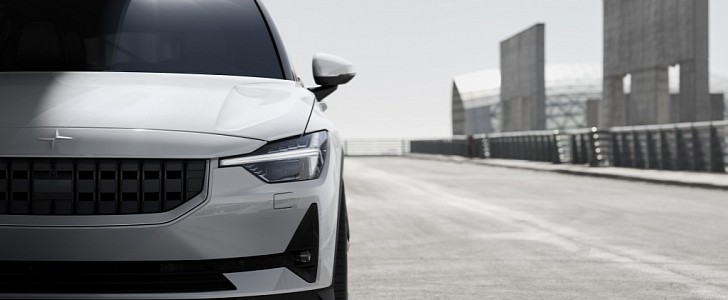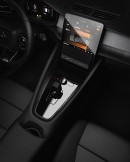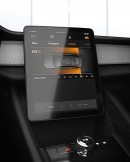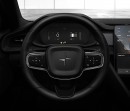But if all this comes off as Polestar trying to throw shade at EVs, that's just a misfortunate by-product of the company's real intentions: pushing for a more transparent (and, preferably, homogenous) way in which manufacturers come up with a vehicle's Life Cycle Assessment.
“Fragmentation will only lead to confusion. Car manufacturers have to come together and be more transparent,” says Fredrika Klarén, Head of Sustainability at Polestar. “What we’re saying at Polestar is, as an industry, let’s help consumers make the right choice.”
Keeping true to its own call for transparency, Polestar made the entire methodology it uses public hoping others will follow suit. Anyone interested can go over the document available here.ndustry is currently advertising electric vehicles as the cleanest mobility option you can get, and rightly so. Of course, the EV pastures aren't as green as they might have us believe, but they're definitely closer to that Windows XP backdrop image than diesels, for example.
You would expect companies that build electric vehicles exclusively to be the most ardent supporters of this technology, and if you look at Tesla, for example, you would be right. But that's because Tesla Motors isn't a brand spun off a traditional manufacturer that still makes gas-powered vehicles. Like Polestar, for example.
The website of the Chinese-owned Swedish company has a tab called "Electric sustainability - it's time to come clean" where it spills the beans on just how much tidier a battery-powered vehicle is compared to one that burns gasoline. For the purpose of this comparison, Polestar chose its own Polestar 2 (electric sedan) and the Volvo XC40 (gas-powered crossover).
To be fair, Polestar sets off from a commendable position. The company laments the fact most manufacturers don't release numbers for the CO2 emissions resulting from the EV manufacturing process, which is a fair point. Given the zero tailpipe emissions, some customers might be tempted to think an electric car is 100 percent clean, which would obviously be a fallacy.
It turns out of the Polestar 2's lifetime CO2e (that's carbon dioxide equivalent, a figure that averages all greenhouse gas emissions under a single roof) footprint reaches a break-even point compared to a Volvo XC40's only after driving a maximum of 112,000 km (69,500 miles), depending on the energy source.
That number is calculated based on the global power mix. According to Polestar, it drops down to 78,000 km (48,400 miles) when using the 2018 European power mix, or even as low as 50,000 km (31,000 miles) in an ideal scenario where all power comes from renewable sources such as wind turbines.
Well, Polestar never intended to make this information an anti-EV pamphlet, and it didn't. First of all, anyone who buys a car and doesn't drive a minimum of 112,000 km (69,500 miles) before they sell it is doing a very bad thing to the environment, regardless of the type of vehicle or its powertrain. That means buying electric, at least in Polestar's scenario, makes perfect sense.
Second, this comparison only takes into account CO2 emissions, but we all know there is plenty of other nasty stuff coming out the tailpipes of ICE vehicles. You don't agree? Then why don't you go take a nap in the garage with every door and window closed and the engine running? (Seriously, don't do that, you'll die).
Finally, you just can't underestimate the importance of having urban areas free of any vehicles with internal combustion engines - or at least having as few of them as possible - and you can only get that with zero tailpipe emissions vehicles. Not only would the air be a lot cleaner (see what happened during the peak of the pandemic), but our brains would have a better time too thanks to the lower noise levels. Yes, tire noise would still be a thing, but the low speed limits in the cities make it less of a problem.
But if all this comes off as Polestar trying to throw shade at EVs, that's just a misfortunate by-product of the company's real intentions: pushing for a more transparent (and, preferably, homogenous) way in which manufacturers come up with a vehicle's Life Cycle Assessment.
“Fragmentation will only lead to confusion. Car manufacturers have to come together and be more transparent,” says Fredrika Klarén, Head of Sustainability at Polestar. “What we’re saying at Polestar is, as an industry, let’s help consumers make the right choice.”
Keeping true to its own call for transparency, Polestar made the entire methodology it uses public hoping others will follow suit. Anyone interested can go over the document by clicking here.
“Fragmentation will only lead to confusion. Car manufacturers have to come together and be more transparent,” says Fredrika Klarén, Head of Sustainability at Polestar. “What we’re saying at Polestar is, as an industry, let’s help consumers make the right choice.”
Keeping true to its own call for transparency, Polestar made the entire methodology it uses public hoping others will follow suit. Anyone interested can go over the document available here.ndustry is currently advertising electric vehicles as the cleanest mobility option you can get, and rightly so. Of course, the EV pastures aren't as green as they might have us believe, but they're definitely closer to that Windows XP backdrop image than diesels, for example.
You would expect companies that build electric vehicles exclusively to be the most ardent supporters of this technology, and if you look at Tesla, for example, you would be right. But that's because Tesla Motors isn't a brand spun off a traditional manufacturer that still makes gas-powered vehicles. Like Polestar, for example.
The website of the Chinese-owned Swedish company has a tab called "Electric sustainability - it's time to come clean" where it spills the beans on just how much tidier a battery-powered vehicle is compared to one that burns gasoline. For the purpose of this comparison, Polestar chose its own Polestar 2 (electric sedan) and the Volvo XC40 (gas-powered crossover).
To be fair, Polestar sets off from a commendable position. The company laments the fact most manufacturers don't release numbers for the CO2 emissions resulting from the EV manufacturing process, which is a fair point. Given the zero tailpipe emissions, some customers might be tempted to think an electric car is 100 percent clean, which would obviously be a fallacy.
It turns out of the Polestar 2's lifetime CO2e (that's carbon dioxide equivalent, a figure that averages all greenhouse gas emissions under a single roof) footprint reaches a break-even point compared to a Volvo XC40's only after driving a maximum of 112,000 km (69,500 miles), depending on the energy source.
That number is calculated based on the global power mix. According to Polestar, it drops down to 78,000 km (48,400 miles) when using the 2018 European power mix, or even as low as 50,000 km (31,000 miles) in an ideal scenario where all power comes from renewable sources such as wind turbines.
Well, Polestar never intended to make this information an anti-EV pamphlet, and it didn't. First of all, anyone who buys a car and doesn't drive a minimum of 112,000 km (69,500 miles) before they sell it is doing a very bad thing to the environment, regardless of the type of vehicle or its powertrain. That means buying electric, at least in Polestar's scenario, makes perfect sense.
Second, this comparison only takes into account CO2 emissions, but we all know there is plenty of other nasty stuff coming out the tailpipes of ICE vehicles. You don't agree? Then why don't you go take a nap in the garage with every door and window closed and the engine running? (Seriously, don't do that, you'll die).
Finally, you just can't underestimate the importance of having urban areas free of any vehicles with internal combustion engines - or at least having as few of them as possible - and you can only get that with zero tailpipe emissions vehicles. Not only would the air be a lot cleaner (see what happened during the peak of the pandemic), but our brains would have a better time too thanks to the lower noise levels. Yes, tire noise would still be a thing, but the low speed limits in the cities make it less of a problem.
But if all this comes off as Polestar trying to throw shade at EVs, that's just a misfortunate by-product of the company's real intentions: pushing for a more transparent (and, preferably, homogenous) way in which manufacturers come up with a vehicle's Life Cycle Assessment.
“Fragmentation will only lead to confusion. Car manufacturers have to come together and be more transparent,” says Fredrika Klarén, Head of Sustainability at Polestar. “What we’re saying at Polestar is, as an industry, let’s help consumers make the right choice.”
Keeping true to its own call for transparency, Polestar made the entire methodology it uses public hoping others will follow suit. Anyone interested can go over the document by clicking here.



































